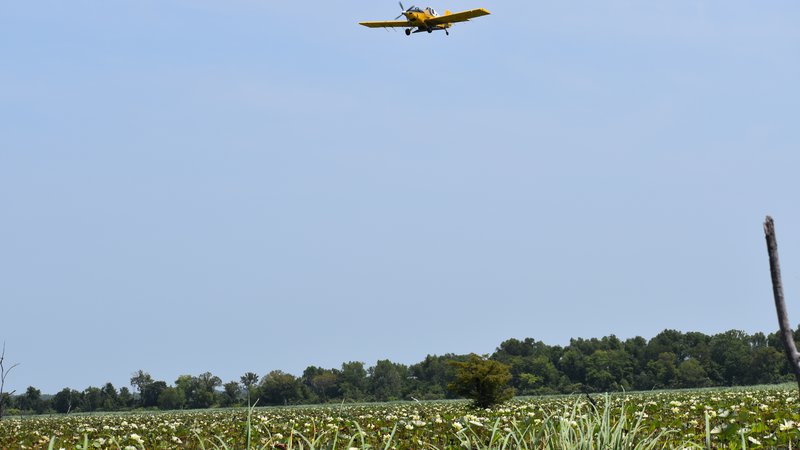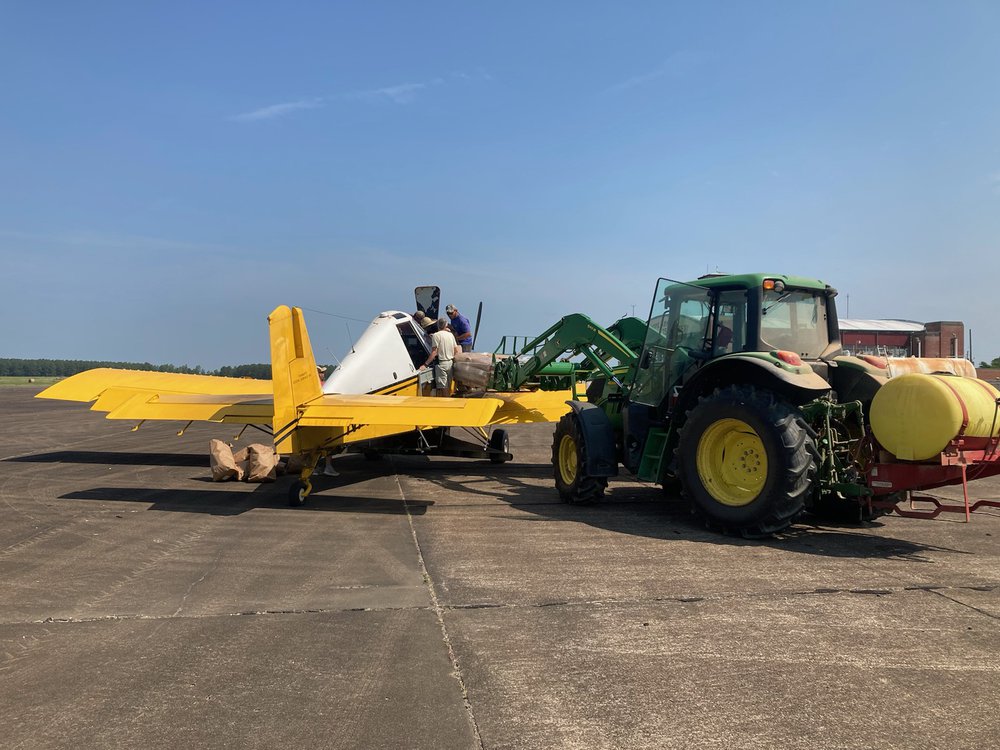AGFC takes to the air for Millwood waterfowl habitat
ON 08-09-2023

Aug. 9, 2023
Randy Zellers
Assistant Chief of Communications
SARATOGA – Thanks to a partnership between the U.S. Army Corps of Engineers, Southwest Arkansas Water District and the Arkansas Game and Fish Commission, waterfowl migrating through the southwestern corner of the state will have hundreds of acres of prime habitat waiting on them, all of it delivered by special air delivery.
When lake maintenance schedules allow, the Corps draws the lake down 2 feet to dry and compact silt in the shallow portion of the lakebed and promote the growth of native vegetation. The vegetation offers cover and nursery habitat for fish, reduces future sedimentation and enhances water quality. With a little boost from the AGFC, this vegetation also can play a key role in providing high-quality forage for ducks and geese migrating to and through Arkansas each year.
Annual smartweeds and native millets will begin to sprout on the mud flats naturally, but biologists hedge their bets by aerially seeding these areas while the soil is still wet.
Griffin Park, regional wildlife supervisor at the AGFC Hope Regional Office, said. The program has been in place for more than a decade, and has seen positive results from both waterfowl and waterfowl hunters each winter.
“We aerially seeded about 500 acres of mud flats last week to take advantage of the drawdown and increase forage potential for shorebirds and waterfowl,” Park said.
Park says aerially seeding the mudflats on the lake has proven effective and creates less disturbance to the aquatic habitat.
“We can fly on seed so much faster than if we tried to broadcast it with a tractor, even if we could access the mudflats with one,” Park said. “Within a few hours, we can have a few days worth of planting done.”

Park says the water level is scheduled to be raised 1 foot September 15 and then return to normal elevation November 1, which will let the millet get a good start. As the Corps closes the gates to refill the lake, the smartweeds and millet will grow and develop tons of seeds for waterfowl to use.
“Just like with rice farming, a little water on it makes it grow quickly and top out,” Park said. “When December rolls around, the water will drop again, creating a buffet for waterfowl throughout winter.”
CUTLINES:
Low-Flying Plane
Millet seed was dropped via crop-duster to seed exposed mudflats at Millwood Lake.
Loading Plane
More than 6,800 pounds of seed was loaded and flown in one day.
Recent News

Arkansas Wildlife Weekly Fishing Report
Jul. 10, 2025

Lonoke aquaculturist named to AGFC
Jul. 10, 2025
Subscribe to Our Weekly Newsletter E-mails
Don’t miss another issue. Sign up now to receive the AGFC Wildlife Weekly Newsletter in your mailbox every Wednesday afternoon (Waterfowl Reports are published weekly during waterfowl season and periodically outside the season). Fishing Reports arrive on Thursdays. Fill in the following fields and hit submit. Thanks, and welcome!
